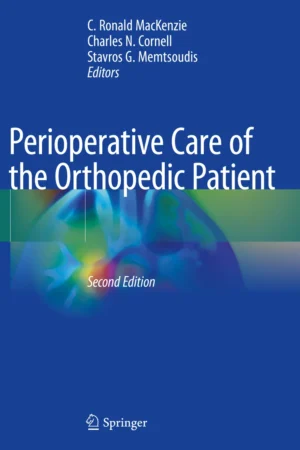Uncommon Ulcers of the Extremities PDF is a specialized clinical reference that provides an in-depth exploration of rare and atypical ulcers affecting the upper and lower limbs. Written by experts in dermatology, vascular medicine, and wound care, this book integrates pathophysiology, diagnostic strategies, and evidence-based management approaches. It is designed to help clinicians recognize, differentiate, and treat uncommon ulcerative conditions that may otherwise be misdiagnosed or inadequately managed.
Why This Book Matters
While chronic ulcers of the extremities are often linked to diabetes, venous insufficiency, or arterial disease, uncommon ulcers present unique diagnostic and therapeutic challenges. These may include vasculitic ulcers, pyoderma gangrenosum, calciphylaxis, infectious ulcers, and rare dermatologic or systemic conditions. Accurate recognition and tailored management are critical to prevent complications such as infection, limb loss, or systemic deterioration. For authoritative guidelines, visit the American Academy of Dermatology (AAD), the Society for Vascular Medicine (SVM), and the Wound Healing Society (WHS).
Key Features of the Ebook
This edition includes:
-
Comprehensive coverage of rare and atypical ulcers of the extremities
-
Diagnostic algorithms integrating clinical, laboratory, and imaging data
-
Evidence-based medical, surgical, and topical treatment strategies
-
High-quality clinical and histopathologic images
-
Case-based discussions highlighting diagnostic challenges and management
-
Guidance on multidisciplinary care involving dermatology, vascular surgery, and wound care teams
-
Insights into emerging therapies and novel treatment modalities
-
Contributions from international experts in dermatology and wound care
For further resources, consult Journal of the American Academy of Dermatology and Advances in Wound Care.
Who Can Benefit
This ebook is designed for:
-
Dermatologists and vascular medicine specialists
-
Surgeons and clinicians managing complex wound care
-
Wound care nurses, nurse practitioners, and physician assistants
-
Residents and fellows in dermatology, surgery, or vascular medicine
-
Researchers focused on ulcer pathophysiology and novel treatments
-
Multidisciplinary teams in hospitals and wound care centers
For related references, explore Chronic Wound Care PDF and Vascular Ulcers: Diagnosis and Treatment PDF.
Learning and Application Strategies
The book emphasizes practical application through real-world cases, clinical decision-making frameworks, and detailed management algorithms. By integrating diagnostic reasoning, pathophysiologic understanding, and therapeutic options, it equips clinicians to optimize patient outcomes in rare ulcerative conditions. For additional clinical guidance, visit the European Wound Management Association (EWMA) and the Society for Vascular Surgery (SVS).
Detailed Content Overview
The chapters are organized to cover:
-
Vasculitic and autoimmune-related ulcers
-
Pyoderma gangrenosum and neutrophilic dermatoses
-
Calciphylaxis and metabolic ulcers
-
Infectious ulcers including atypical bacterial, fungal, and viral etiologies
-
Rare dermatologic and systemic disease-associated ulcers
-
Ulcers in immunocompromised patients
-
Pediatric and geriatric considerations
-
Diagnostic pitfalls, differential diagnosis, and mimics
-
Surgical and advanced wound care interventions
-
Emerging therapies and future directions in ulcer management
Conclusion
Uncommon Ulcers of the Extremities PDF is an essential resource for clinicians and healthcare professionals managing complex and rare ulcerative disorders. By combining pathophysiologic insights, multidisciplinary approaches, and evidence-based treatments, it provides the knowledge required to accurately diagnose, treat, and prevent complications in patients with uncommon extremity ulcers.
👉 Download Uncommon Ulcers of the Extremities PDF today to enhance your expertise in rare ulcer management. For authoritative references, visit Springer Dermatology, explore related titles such as Chronic Wound Care PDF, and consult the American Academy of Dermatology (AAD).











